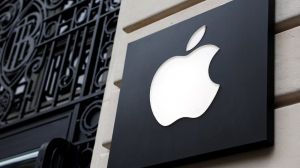US Fed chief warning sends treasury prices tumbling
Federal Reserve chairman Alan Greenspan warned that "inflationary pressures could re-emerge, possibly faster than some currently per...

Federal Reserve chairman Alan Greenspan warned that "inflationary pressures could re-emerge, possibly faster than some currently perceive" if technology-driven productivity gains slow or employers continue to hire so readily. The bond market ignored the "if" and concluded that the Fed chief was warning that he is moving closer to raising interest rates.
The benchmark 30-year treasury bond fell 12/32 points, or $10.625 for each $1,000 face amount, sending its yield, which moves in the opposite direction of its price, to 5.783 per cent from 5.703 per cent late Wednesday. Stocks also ended the day generally lower.
Wall Street Fed watchers don’t anticipate a Fed interest-rate increase when officials convene on May 18. Still, some are speculating that the Fed may end that meeting with a public statement suggesting it is leaning toward higher rates. Market sentiment could shift if Friday’s report on employment in April is surprisingly strong or weak.
"The speech itself was fairly balanced, but the market was already struggling, and he referred to global growth and how productivity improvements may not continue, and that was enough to put the (treasury) market over the edge," said Bill Kirby, co-head of government trading at Prudential Securities in New York.
Greenspan’s speech, to a Chicago Federal Reserve Bank conference, was filled with optimistic pronouncements about the long-lasting effects of technology on productivity growth and on what he described as a "self-reinforcing… process of price containment" that has kept the inflation rate low.
He also cautioned, as he has before, that "there are imbalances in our expansion, that unless redressed, will bring this long run of strong growth and low inflation to a close". Notably absent from the address was any strong warning about the "downside" risks to the economy. "Things seem to be stabilising," he said in response to a question about the global financial crisis, though he quickly added, "the outlook has to be perceived of as fragile".
One "imbalance," he said, is that the US is on the verge of running out of workers. About 10 million people, or 5.75% of the work force, are officially counted as unemployed or willing to work but not actively seeking a job. The measure, one of Greenspan’s favorites, hasn’t been this low in the 29 years that the government has been tracking it.
"At some point," he explained, "labor-market conditions can become so tight that the rise in nominal wages will start increasingly outpacing the gains in labor productivity, and prices inevitably will begin to accelerate." Similarly, he emphasised that the recent strong growth in productivity, or output per hour of work, has been critical to the welcome coincidence of low unemployment an low inflation. Even if productivity growth stabilises at current levels, he said, inflationary pressures could emerge as businesses raise prices to maintain profit margins.



- 01
- 02
- 03
- 04
- 05




























